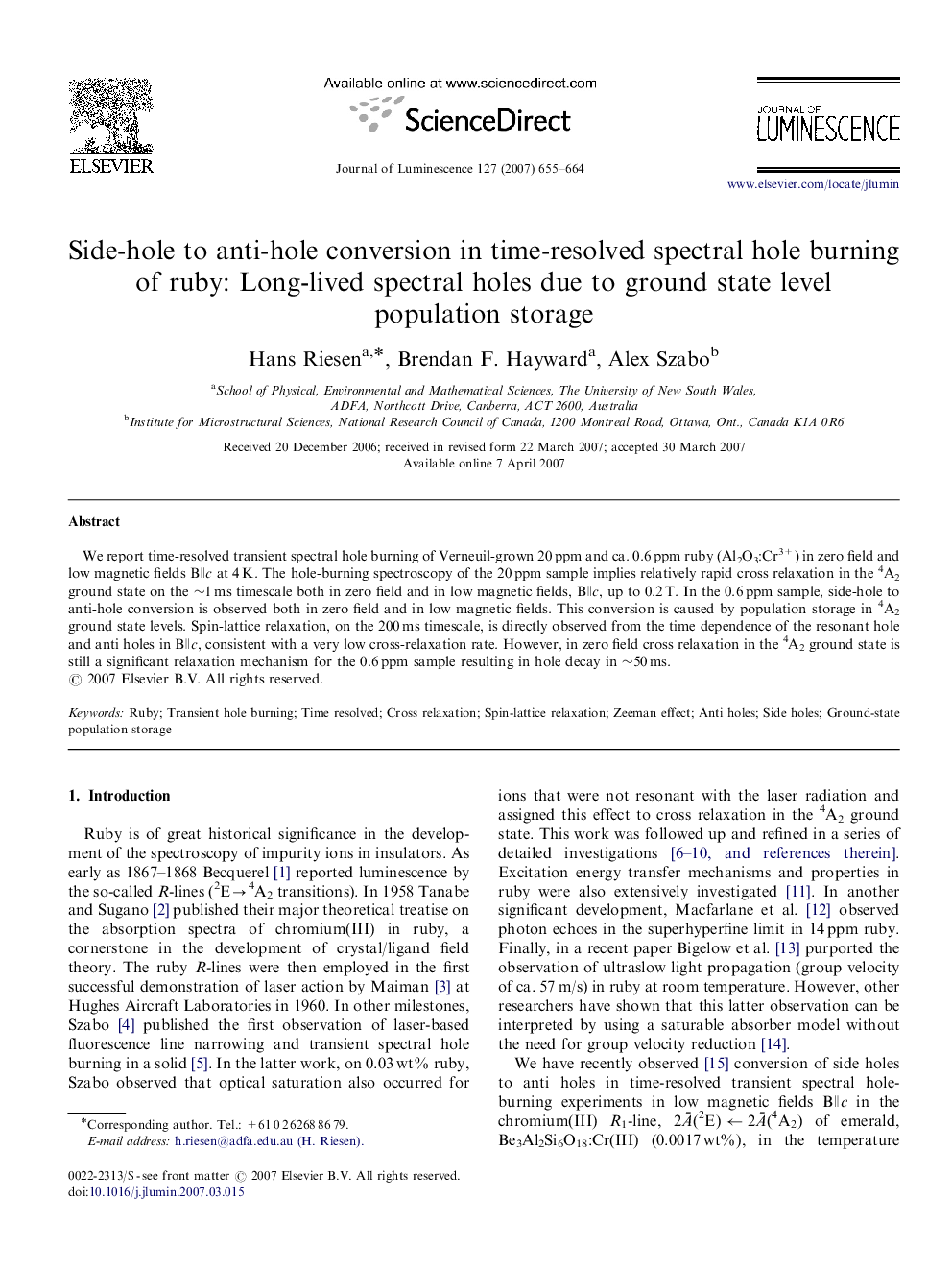| Article ID | Journal | Published Year | Pages | File Type |
|---|---|---|---|---|
| 5403197 | Journal of Luminescence | 2007 | 10 Pages |
Abstract
We report time-resolved transient spectral hole burning of Verneuil-grown 20 ppm and ca. 0.6 ppm ruby (Al2O3:Cr3+) in zero field and low magnetic fields Bâ¥c at 4 K. The hole-burning spectroscopy of the 20 ppm sample implies relatively rapid cross relaxation in the 4A2 ground state on the â¼1 ms timescale both in zero field and in low magnetic fields, Bâ¥c, up to 0.2 T. In the 0.6 ppm sample, side-hole to anti-hole conversion is observed both in zero field and in low magnetic fields. This conversion is caused by population storage in 4A2 ground state levels. Spin-lattice relaxation, on the 200 ms timescale, is directly observed from the time dependence of the resonant hole and anti holes in Bâ¥c, consistent with a very low cross-relaxation rate. However, in zero field cross relaxation in the 4A2 ground state is still a significant relaxation mechanism for the 0.6 ppm sample resulting in hole decay in â¼50 ms.
Related Topics
Physical Sciences and Engineering
Chemistry
Physical and Theoretical Chemistry
Authors
Hans Riesen, Brendan F. Hayward, Alex Szabo,
